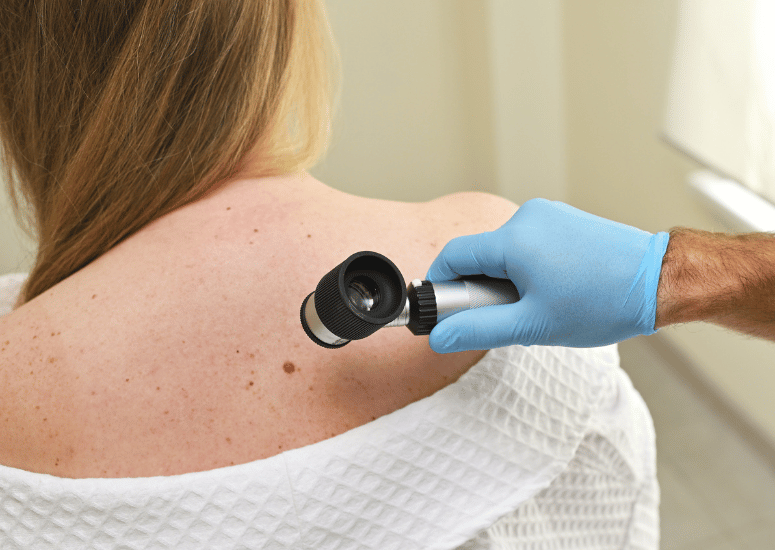EXPLAINER: What is melanoma, and how can you reduce your risk of developing it?
Kelly Clarkson's ex-husband, talent manager Brandon Blackstock died at 48 after a battle with melanoma, according to TMZ.
The news came a day after the singer postponed her remaining shows in Las Vegas, saying in an Instagram post that she needed to be "fully present" for their children as their father had been ill.
Other familiar faces including Miss Universe 1993 Dayanara Torres, Khloe Kardashian, and Andy Cohen are known to have battled with the same disease.
Here's what you need to know about this type of skin cancer, including how you can reduce your risk of developing it.
What is melanoma?
Dr. Maria Criselda C. Valerio, a board-certified dermatologist and oncodermatology specialist at St. Luke’s Medical Center-Quezon City and Fatima University Medical Center-Antipolo, explained to PhilSTAR L!fe that melanoma is a type of skin cancer that starts in melanocytes—cells that make pigment or color in the skin.
She added that while it commonly affects the skin, it can also develop on the eye (uvea and conjunctiva), brain lining (meninges), and mucosal membranes.

Valerio said sun exposure, specifically UV exposure, is the most significant environmental risk factor for melanoma, especially in individuals with lighter skin.
"UV rays can damage the DNA (genetic material) in skin cells, trigger inflammation, and weaken the skin’s immune defenses. This can cause cells to grow uncontrollably, forming a mass of cancerous cells," she explained.
She, however, noted that melanomas are not caused by sun exposure alone and may present anywhere on the skin surface, including those who are rarely exposed to the sun.
"For men, the most common location is the back. For women, it is the lower extremities followed by the trunk," Valerio said.
"It can be a changing mole, a new spot on the skin, or a spot that looks different from other spots on your skin (ugly duckling sign). In rare cases, melanoma can present as a pinkish spot or bump that lacks pigment," she added.
According to Valerio, individuals who are at risk of developing the disease include those who have a history of sunburns or extensive sun exposure, blue or green eyes, blonde or red hair, fair skin, over 100 moles on their body, any unusual or atypical moles, or a personal or family history of melanoma.
Valerio noted that when you spot any unusual spot or mole, it's important to have it checked immediately by a board-certified dermatologist through a full body skin examination with dermoscopy.
"If there is a concerning skin lesion, a skin biopsy will be done wherein a part of your skin may be removed and sent to the lab to be examined under a microscope," she continued.
Available treatments
Dr. Gina Eubanas, a fellow of the Philippine Dermatological Society, told L!fe that if you have been diagnosed with melanoma, the chances of developing another melanoma could increase by six to 10 times within the first year. The risk continues during the first five years, from 2% to 11%.
Per Valerio, the disease shouldn’t be taken lightly as even a small melanoma "can metastasize and spread to different organs in the body." She described it as "aggressive and potentially lethal," but noted that it's curable, especially when it's diagnosed and treated early.

Treatment may vary depending on the stage of the disease and the patient's health. If detected early, surgery may remove the cancer from a specific area, but those in more advanced cases would have to undergo systemic treatments—such as immunotherapy, targeted therapy, or chemotherapy—to destroy cancer cells in the body.
"For a more advanced disease, a coordinated team of specialists is often required to provide comprehensive care. This team may include a dermatologist, medical oncologist, radiologist, plastic surgeon, radiation oncologist, pathologist, and other healthcare professionals, depending on the patient's specific needs," she said.
Eubanas added that lymph nodes are dissected in more advanced cases. "A specialized form of surgery called Mohs micrographic surgery is sometimes performed to preserve as much skin and surrounding tissue," she explained.
"Current adjuvant chemotherapy is being used for advanced melanoma stages," she continued.
Preventive care
"Remember that the key to surviving melanoma isn’t just treatment—it’s catching it early," Valerio emphasized in an interview with L!fe.
"Early detection saves lives. Check your skin regularly for new or changing moles. Learn the warning signs of melanoma. Encourage your family and loved ones to do skin checks too," she said.
To do a self-skin exam, both Valerio and Eubanas suggested using the ABCDE rule:
- Asymmetry: One half of the mole or spot does not match the other half.
- Border: The edges of the mole have an irregular, uneven, poorly defined border.
- Color: The spot has varying colors from one area to the next (may be brown, black, patches of pink, areas of white, red, or blue).
- Diameter: The mole is about the size of a pencil eraser (6mm) or larger.
- Evolving: The spot is changing in size, shape, or color.
If you observe anything unusual, the experts suggested consulting a board-certified dermatologist for professional advice.
Other things you can do to help you prevent the disease, per Valerio, include stay out of the sun during peak hours;wearing protective clothing like wide-brimmed hats, long sleeves, and sunglasses; using sunscreen with SPF 30 or higher, and reapplying every 2 hours; and avoiding getting sunburned, especially at a young age.


